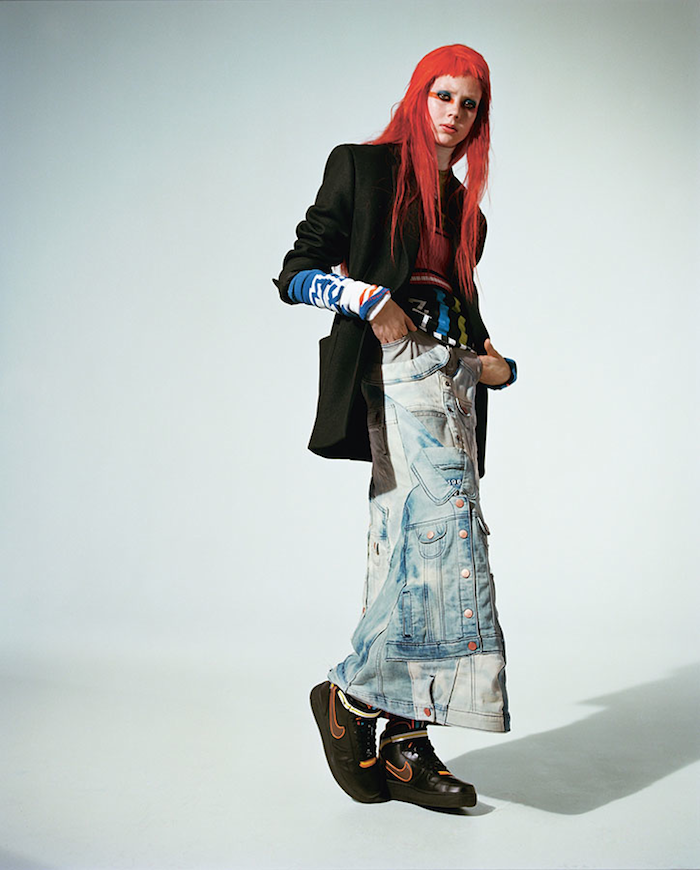PETA urges students to go anti-fur

So the anti-animal cruelty charity PETA sent a letter in late October to the students at Central Saint Martins to urge them not to favor fur in their collections. To give it a little weight and PR value, PETA teamed up with a host of young London designers (including Molly Goddard, Faustine Steinmetz, Marta Jakubowski and Hannah Weiland of faux-fur favorites Shrimps). It reads, “As future fashion designers, students at Central Saint Martins have a unique opportunity to influence the next generation of consumers by embracing the trend towards cruelty-free fashion”. True dat.
But I´m asking, why does it always have to be so black and white when clothing production also has a variety of grays? Ethical fashion is important. It is the future. But I like to keep it in a wider perspective and not just about the bunnies and foxes. Fake fur might be ethical from PETA´s point of view as no animals were harmed to make it, but what about harming people? There fore fake-fur is not exactly ethical either unless the workers have the opportunity to receive a fair living wage and form worker unions which at the moment are just a distant dream in so many textile industry heavy countries. This is why from the consumer´s point of view it so important to push brands to be ethical in general and go fully transparent.

I totally agree with PETA on the ethicality on producing new fur, it is totally mad and a part of the old worlds style of doing business, but what about recycled fur?! It makes me so angry every time I read fashion news (this also means you Dazed Digital) about ditching fur, and nobody ever mentions the option to switch to recycled. From the natural resources point of view (water, soil, air) and as a textile waste type, fur is a very valuable material and should be kept in circulation (in use) as long as possible! Read about MIPS numbers (English here, here and here, and in Finnish here, here and here). Clothes should be viewed from the garments full life cycle and not just from one point of view.
If one leather jacket equals 25 000 liters of fresh water (the most valuable natural resource on the planet) to get made, fur must be more as it is basically the same thing plus the hair. Also furs CO2 footprint and environmental impact is enormous compared to other fibers. Many seem to view fur as a natural fibre (compostable), when it is actually more like toxic waste at the landfill as it is full of chromium and does not decompose. If it would decompose at all, it would do that already in your closet. After all, it is animal skin.
But real fur has excellent fibre capabilities to keep warmth and rain and lasts over three generations in use when it is taken care of well. It can also be mended and refashioned better and easier than any other garment, textile fabric or leather because the fur garment can be pieced together even from the smallest scraps. Cut waste is minimal. So in my mind real fur is much better than any other regular textile fibre when it comes to usage time and reusability. Every fashion brand, that uses fur, should go recycled.

The letter also pleaded “We, the undersigned, urge you not to give in to industry bribes and incentives” which is a great advice. Green and sustainable fashion is truly independent. Lobbyists from all types of companies (not just the fur industry) are all over these students to get their product on the catwalk, and free luxury material does sound tempting to someone with a limited production budget. But clothing charity organizations and textile collecting companies have much smaller opportunities and budgets to spend on lobbying and marketing their services. For this I see that one solution might be that the fashion schools should do the responsible thing and contact themselves these textile recycling organizations for collaboration opportunities for their students.
If the fashion students or Central Saint Martins want to keep fur in their curriculum in the future (and I think they should), I hope they look for recycled options instead of the new material. Because anyone who has ever visited thrift shops and textile sorting centers, knows that fur is widely available recycled. And it is cheap!
Just teach the kids how to design from clothes to clothes by using fur post consumer waste. A responsible / sustainable designer does not use new materials anyway as our industry, humanity or the planet cannot afford any longer.
Via Dazed Digital. Photos: Unsplash.
Published Nov 16th 2016.




Leave a Reply